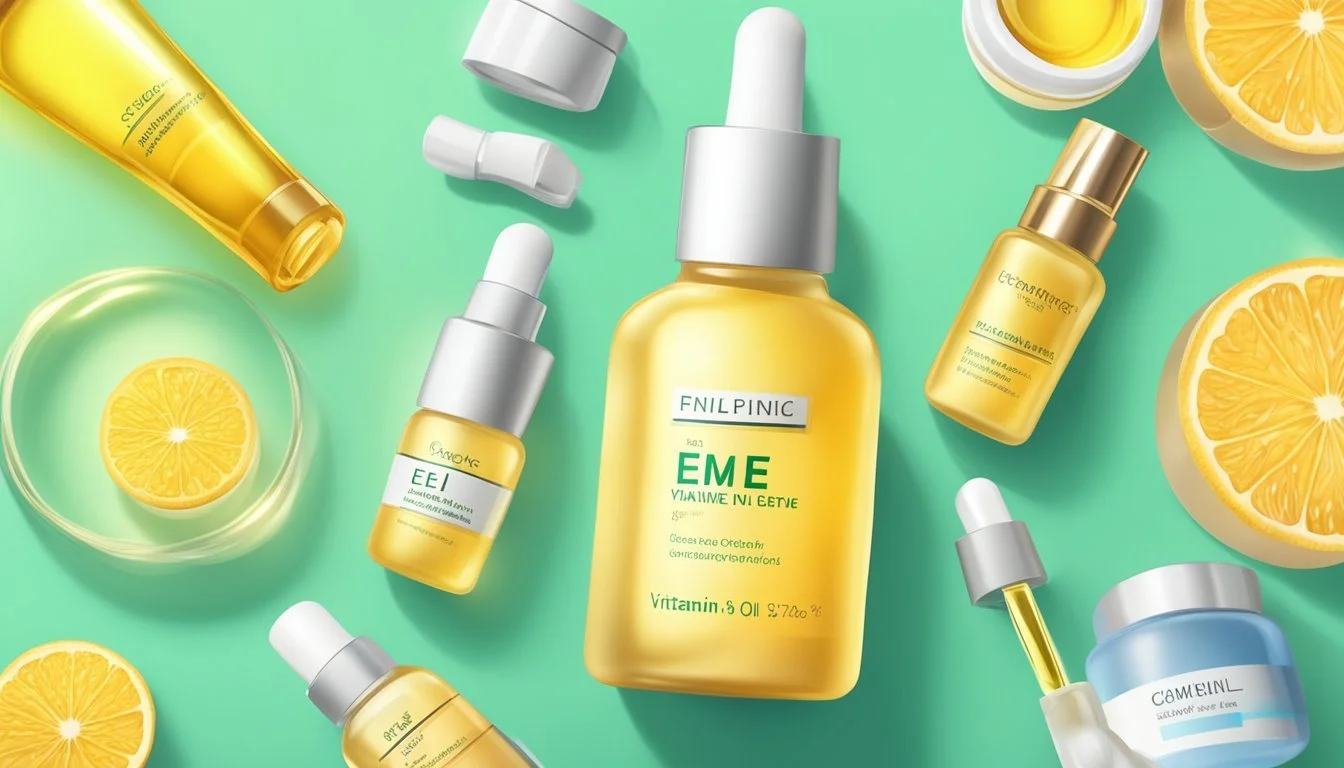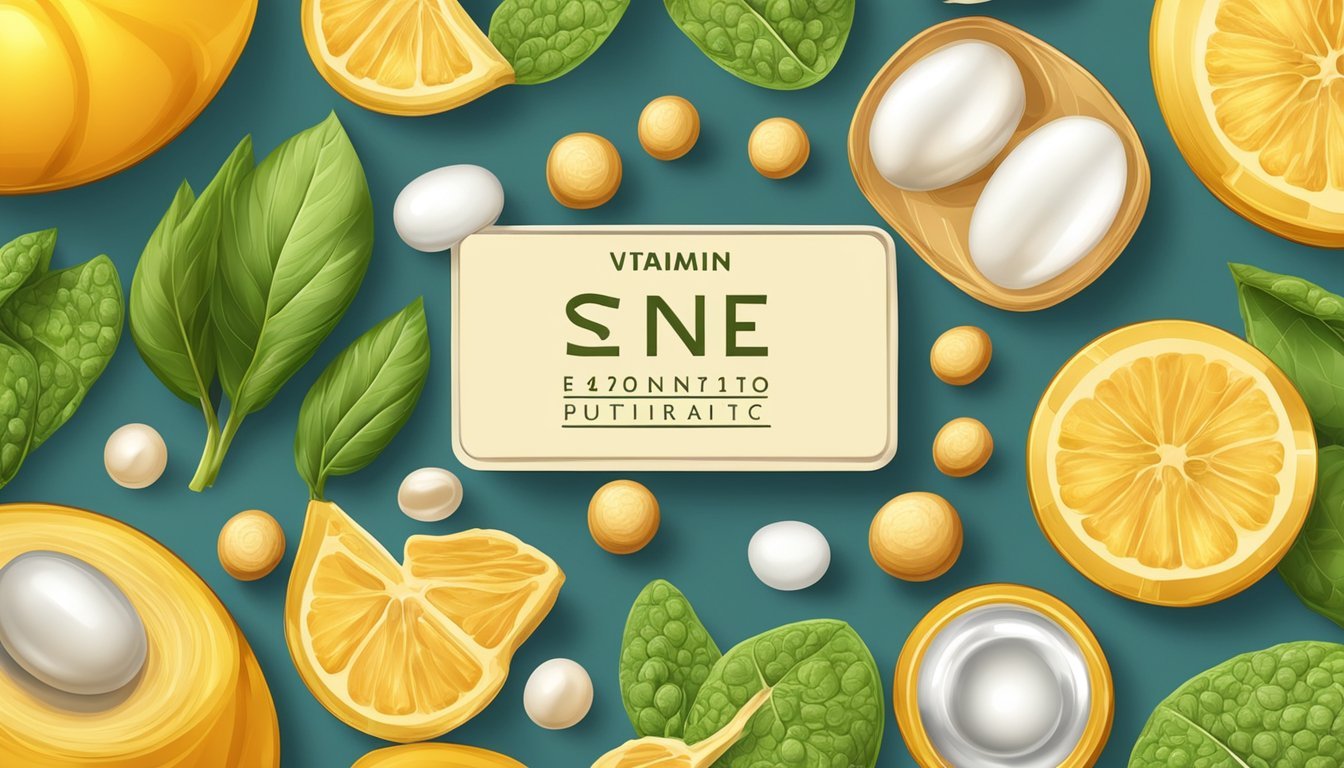How Much Vitamin E is Beneficial for Skin Health
Optimal Dosage Insights
Vitamin E has long been recognized for its role in maintaining healthy skin. It is a nutrient and antioxidant with properties that may help protect the cells from damage, thus sustaining the skin's integrity and appearance. This fat-soluble vitamin is known to soften the skin and is readily absorbed, making it a common ingredient in moisturizers and skin creams.
In discussing skin health, Vitamin E's potential benefits extend to its ability to absorb harmful UVB rays, which can reduce sun damage and promote healing in skin tissue. Its antioxidant action could also play a part in fighting free radicals, molecules that can harm the skin and accelerate the aging process.
The benefits to skin health from Vitamin E are also linked to its influence on the immune system. A healthy immune system is crucial for fending off infections that can affect skin health. Moreover, research suggests that Vitamin E could be effective in reducing symptoms of skin conditions like atopic dermatitis. It is important, however, to discern the optimal amount of Vitamin E that can confer these benefits without leading to adverse effects.
The Role of Vitamin E in Skin Health
Vitamin E is a key player in maintaining skin health due to its antioxidant properties, moisturizing effects, and potential to improve skin appearance. These benefits contribute to its widespread use in skincare formulations.
Antioxidant Protection
The skin often falls prey to oxidative stress due to environmental factors such as pollution and UV radiation which can generate free radicals. Vitamin E serves as a potent antioxidant that helps protect skin cells from this damage. By neutralizing free radicals, it aids in preventing the breakdown of the skin's cellular structure.
Moisturization and Healing
As a common ingredient in moisturizers, Vitamin E helps in retaining moisture within the skin, keeping it hydrated. This hydration is crucial for maintaining a strong barrier function and promoting natural healing processes. In cases of dry skin or minor wounds, vitamin E can accelerate the reparative phase, fostering quicker recovery and reducing the loss of moisture.
Anti-Aging and Skin Appearance
With aging, the skin naturally loses elasticity and begins to show signs such as wrinkles and fine lines. Vitamin E's antioxidant effect may also provide anti-aging benefits by supporting skin elasticity and integrity, leading to a reduction in the appearance of aging signs. Additionally, it can assist in ameliorating dark spots and uneven skin tone, contributing to a more youthful and radiant complexion.
Vitamin E Source and Types
Vitamin E, known for its antioxidant properties, is available through a balanced diet as well as in supplement and topical forms. Understanding the sources and types of vitamin E can contribute greatly to skin health.
Dietary Sources
Vitamin E, or tocopherol, is a fat-soluble vitamin predominantly found in a variety of foods. For a healthy diet rich in vitamin E, consider incorporating the following:
Nuts and seeds: Almonds, sunflower seeds, and peanuts are excellent sources of vitamin E.
Vegetables: Spinach and broccoli offer a significant amount of this nutrient.
Oils: Wheat germ oil, olive oil, and other plant-based oils are high in tocopherol content.
Fruits: Avocados are not only rich in healthy fats but also vitamin E.
Fortified Foods: Many cereals are fortified with vitamin E, making them a convenient source.
Food Source Vitamin E Content Almonds, 1 ounce 7.3 mg Spinach, 1/2 cup 1.9 mg Sunflower seeds, 1 ounce 10.3 mg Wheat germ oil, 1 tablespoon 20.3 mg
Supplements and Topicals
Vitamin E supplements are available in various forms, including soft gel capsules, which can be taken orally to help meet the recommended dietary allowance. For topical application, vitamin E is found in creams and serums that aim to nourish and protect the skin.
Capsules: Usually taken as a dietary supplement to support overall vitamin intake.
Creams and Serums: These are applied directly to the skin and are believed to help moisturize and heal damaged skin as well as offer protection from environmental stressors.
Recommended Vitamin E Intake
For optimal skin health, the National Institutes of Health (NIH) recommends a specific intake of vitamin E, which varies depending on age and gender. While obtaining vitamin E through diet is generally preferable, supplementation may be advised in certain cases, always under the guidance of a healthcare provider.
Dietary Allowance
The Recommended Dietary Allowance (RDA) for vitamin E is set by the NIH to meet the nutritional needs of the majority of healthy individuals. It is expressed in milligrams (mg) of alpha-tocopherol, which is the most active form of vitamin E in the body. Specifically, the RDA for adults 19 years and older is 15 mg of vitamin E daily. Maintaining this level through consumption of vitamin E-rich foods can support skin health, among other physiological functions.
For Adults (19 Years and Older)
Men: 15 mg/day
Women: 15 mg/day
Pregnant Women: 15 mg/day
Breastfeeding Women: 19 mg/day
Supplementation Guidelines
While dietary sources are usually sufficient to meet the daily needs, some individuals may require an oral supplement. A healthcare provider or a board-certified dermatologist should be consulted before commencing any vitamin E supplementation regimen. High doses of vitamin E supplements can pose health risks, and the upper limit for adults is established at 1,000 mg (approximately 1,500 IU) per day of any form of supplemental alpha-tocopherol. It's critical that individuals discuss their health and dietary needs with a professional to determine the appropriate dosage, if supplementation is necessary.
Vitamin E and Skin Conditions Management
Vitamin E is renowned for its antioxidant properties, which play a crucial role in protecting the skin from various conditions and managing certain dermatological diseases. This section delves into how Vitamin E contributes to skin health, focusing on protection against UV damage, its role in inflammatory skin diseases, cancer prevention perspectives, and its importance for sensitive skin.
Protection Against UV Damage
Exposure to UV light, including both UVA and UVB rays, can lead to sunburn and sun damage, which, over time, may accelerate skin aging and increase the risk of skin cancer. Vitamin E, often found in sunscreens, contributes to the protection of skin cells from UV-induced free radical damage. When combined with sunscreen, it can enhance the product's ability to safeguard the skin against harmful rays.
Inflammatory Skin Diseases
Vitamin E's anti-inflammatory qualities make it beneficial for conditions like psoriasis and eczema, where skin inflammation is a primary concern. It helps soothe the skin and may reduce the severity of symptoms. Dermatologists often recommend creams enriched with Vitamin E for their calming effects on inflamed and irritated skin.
Cancer Prevention Perspectives
Research has investigated Vitamin E for its potential role in cancer prevention due to its ability to protect DNA from free radical damage. While it is not a standalone solution for skin cancer prevention, it supports the skin’s defense against environmental stressors that can contribute to cancerous changes in skin cells.
Care for Sensitive Skin
Individuals with sensitive skin might find Vitamin E particularly beneficial due to its gentle and moisturizing properties. It can help hydrate dry skin areas without causing irritation, contributing to a smoother complexion and overall skin health when used as advised by a dermatologist.
Interaction with Other Nutrients
Vitamin E's effectiveness for skin health may be enhanced or influenced by its interaction with other nutrients. Recognizing these relationships and the proper balance is crucial for maximizing the benefits of vitamin E.
Synergy with Vitamin C and Others
Vitamin E and Vitamin C work synergistically as powerful antioxidants. When combined, they can enhance each other's effectiveness in protecting skin cells from oxidative damage. Vitamin C helps to regenerate oxidized Vitamin E, providing a stronger defense against harmful environmental factors.
Vitamin A: Often works in concert with Vitamin E, contributing to skin health by supporting the healing process and maintenance of the skin.
Zinc: This nutrient aids in the functioning of Vitamin E and has pivotal roles in maintaining the structural integrity of skin tissues.
Niacin: It is another supportive nutrient that, when paired with antioxidants, may offer additional skin protection.
Nutritional Balance and Absorption
The absorption of Vitamin E, specifically the tocopherol and tocotrienol subtypes, is reliant on the presence of dietary fat. As a fat-soluble vitamin, it is stored in the body's fatty tissues, including the sebum produced by skin glands.
Gamma-tocopherol and gamma-tocotrienol: Accessible forms of Vitamin E in the diet that can influence skin health through their antioxidant properties.
Delta-tocopherol: Another form of Vitamin E that aids in nourishing the skin, though to a lesser extent compared to the gamma forms.
Proper nutritional balance is essential, as excessive intake of one nutrient can sometimes impair the absorption of another. This balance is crucial when considering nutritional strategies for optimal skin health.
Safety and Side Effects of Vitamin E
When considering Vitamin E for skin health, it's essential to understand the parameters of safe usage and potential negative outcomes. Vitamin E is valued for its antioxidant properties, yet when employed incorrectly, issues may arise.
Recognizing Vitamin E Overdose
High doses of Vitamin E supplements can lead to an overdose, which might manifest as bleeding due to Vitamin E’s ability to inhibit platelet aggregation. Symptoms of vitamin E overdose can include:
Fatigue
Headaches
Blurred vision
Addressing Deficiency
Vitamin E deficiency, although rare, can cause problems such as immune system impairment. People should aim for adequate vitamin E intake through their diet or supplements, under professional guidance, to support overall health.
Side Effects and Contraindications
Side effects of Vitamin E largely hinge on dosages and individual health conditions. Excessive intake can cause:
Nausea
Diarrhea
Stomach cramps
In terms of contraindications, those with a history of stroke or blood clots should use Vitamin E cautiously due to the potential risk of hemorrhage.
Consulting Healthcare Professionals
Before starting a regimen with vitamin E supplements, it's advisable to consult a healthcare provider. A board-certified dermatologist can particularly offer insights into Vitamin E usage tailored for skin health. This ensures individual health factors are considered to avoid contraindications and side effects.
Advances in Skincare With Vitamin E
Recent advancements in skincare have significantly leveraged the benefits of vitamin E. Not only is it recognized for its moisturizing properties, but also for its ability to contribute to skin health and protection as an antioxidant.
Innovative Vitamin E Formulations
Innovative formulations of vitamin E have proven to be more stable and effective when incorporated in skincare products. Serums, rich in this nutrient, deliver potent doses directly to the skin, enhancing the moisturizing and anti-inflammatory aspects of topical treatments. Advancement in encapsulation technology ensures vitamin E remains stable, maximizing its efficacy before being absorbed by the skin. This has been particularly beneficial in products designed for post-chemotherapy skin care, where gentle and restorative ingredients are critical.
Emerging Research and Applications
Recent research has expanded the understanding of vitamin E's role in skincare, beyond its traditional use. Findings indicate that, when applied topically, vitamin E may contribute to the amelioration of skin conditions related to inflammation and hydration. These studies have paved the way for its application in therapeutic treatments and preventative skincare regimes. Moreover, preliminary investigations suggest potential correlations between topical vitamin E application and a reduction in the risk factors associated with heart disease, although more research is required to substantiate these claims.
Conclusion
Vitamin E is recognized for its antioxidant properties, playing a critical role in protecting skin from the harmful effects of free radicals. Consistent consumption and application can support skin health, aiding in its function as a barrier and potentially reducing the impact of UV damage. It is important, however, to consider that excessive application has no proven extra benefits.
The presence of vitamin E in various skin products underscores its moisturizing and protective qualities. It is seen in moisturizers and oils due to its ability to be absorbed into the skin, promoting a smoother complexion. Furthermore, Vitamin E's role in sebum helps naturally moisten the skin.
When incorporating vitamin E into one’s skincare routine, moderation is key. The appropriate amount varies depending on individual needs and product formulations. Consultation with a healthcare provider can ensure safe and optimal use.
The evidence on vitamin E points to its supportive role in skin health and maintenance:
Protection: Helps shield skin cells from damage.
Moisturization: Contributes to the natural moisturization through sebum.
UV Defense: May absorb harmful UVB rays, reducing sun damage.
Antioxidant: Combats oxidative stress caused by environmental aggressors.
In summary, vitamin E is a beneficial component for maintaining skin health but should be used judiciously to align with personal health profiles and skincare objectives.





